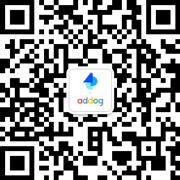本案例默认翻译为中文,点击可切换回原语言
已切换成原语言,点击可翻译成中文
船上的大脑
案例简介:问题 交通伤害研究基金会 (TIRF) 和丰田基金会与 Acart Communications 合作,开始了一种关于安全驾驶的新对话。通过他们的研究,TIRF 发现了一个新出现的安全问题,司机对他们的车辆的高级安全特性过于自信。TIRF 对 2,506 名加拿大人进行了民意调查,发现有相当多的人表达了 “行为适应” 的症状 -- 这意味着当他们有安全特征时,他们更愿意从事危险的行为车辆。因此,他们驾驶更加积极。作为其企业社会责任的一部分,丰田基金会要求开展一场运动,促进更明智地使用其著名的安全功能,以便加拿大人能够充分利用这些功能。 故事 交通伤害研究基金会 (TIRF) 和丰田基金会与 Acart Communications 合作,开始了一种关于安全驾驶的新对话。通过他们的研究,TIRF 发现了一个新出现的安全问题,司机对他们的车辆的高级安全特性过于自信。TIRF 对 2,506 名加拿大人进行了民意调查,发现有相当多的人表达了 “行为适应” 的症状 -- 这意味着当他们有安全特征时,他们更愿意从事危险的行为车辆。因此,他们驾驶更加积极。作为其企业社会责任的一部分,丰田基金会要求开展一场运动,促进更明智地使用其著名的安全功能,以便加拿大人能够充分利用这些功能。这项运动的目标是加拿大司机倾向于成熟的男性。TIRF 的研究表明,大多数加拿大司机觉得他们比普通司机安全得多,但是人们不理解新的安全功能的作用和局限性。他们需要参与关于正确使用它们的对话。通过丰田的渠道,这项活动将聚焦于自己的客户,但更广泛的目标是获得主流和社交媒体的报道。Acart 开发了品牌信息平台 “车载大脑”,以吸引观众谈论智能驾驶的话题。我们为 TIRF 提供了活动微型网站 brainboard.ca 的品牌设计,托管基于研究的读者友好内容,解释安全特性和司机行为。为了推广该网站,Acart 制作了一系列海报,这些海报结合了 rebus 和文字来表达关于更安全驾驶的信息。通过吸引观众来解码海报,这实际上迫使他们以不同的方式思考。接下来是 TIRF 的安全统计和微网的驾驶。作为一种意识和参与运动,船上的大脑应该通过网络分析和媒体收集来判断。为 brainboard。 ca: 总访问量: 每天 7,171 次平均访问量 (自 1月31日发布以来): 265 次总访问量: 168,067 次文档下载: 468 这项活动表明,该活动不仅使目标受众好奇; 持续的访问和大量的下载表明,社交营销运动开始获得动力。赢得媒体: 受众范围: 超过 320万的广告价值: 超过 78,000 美元的报道: 12 篇报纸文章和 12 篇在线文章,包括环球邮报、国家邮报、温哥华太阳报、蒙特利尔公报、多伦多太阳报,渥太华公民。赢得的媒体是该运动与全国道路安全对话相关性的有力标志。该活动还出现在世界广告上,被评为 AdWeek 最有影响力的营销博客,这导致该活动在全球几个主要的营销、安全和汽车博客中出现。 哲学 Acart 开发了品牌信息平台 “车载大脑”,以吸引观众谈论智能驾驶的话题。我们为 TIRF 提供了活动微型网站 brainboard.ca 的品牌设计,托管基于研究的读者友好内容,解释安全特性和司机行为。为了推广该网站,Acart 制作了一系列海报,这些海报结合了 rebus 和文字来表达关于更安全驾驶的信息。通过吸引观众来解码海报,这实际上迫使他们以不同的方式思考。接下来是 TIRF 的安全统计和微网的驾驶。 结果 作为一种意识和参与运动,船上的大脑应该通过网络分析和媒体收集来判断。为 brainboard。 ca: 总访问量: 每天 7,171 次平均访问量 (自 1月31日发布以来): 265 次总访问量: 168,067 次文档下载: 468 这项活动表明,该活动不仅使目标受众好奇; 持续的访问和大量的下载表明,社交营销运动开始获得动力。赢得媒体: 受众范围: 超过 320万的广告价值: 超过 78,000 美元的报道: 12 份报纸Er 文章和 12 篇在线文章,包括环球邮报、国家邮报、温哥华太阳报、蒙特利尔公报、多伦多太阳报、渥太华公民。赢得的媒体是该运动与全国道路安全对话相关性的有力标志。该活动还出现在世界广告上,被评为 AdWeek 最有影响力的营销博客,这导致该活动在全球几个主要的营销、安全和汽车博客中出现。
船上的大脑
案例简介:Problem Traffic Injury Research Foundation (TIRF) and Toyota Foundation partnered with Acart Communications to start a new kind of conversation about safe driving. Through their research, TIRF had identified an emerging safety issue of drivers becoming overconfident in their vehicles’ advanced safety features. TIRF conducted a public opinion poll of 2,506 Canadians and found a significant number expressed symptoms of “behavioural adaptation” — meaning that they were more willing to engage in dangerous behaviours when they have safety features on their vehicle. As a result, they were driving more aggressively. Toyota Foundation, as part of its Corporate Social Responsibility, required a campaign to promote smarter use of its well-known safety features so that Canadians can take full advantage of them. Story Traffic Injury Research Foundation (TIRF) and Toyota Foundation partnered with Acart Communications to start a new kind of conversation about safe driving. Through their research, TIRF had identified an emerging safety issue of drivers becoming overconfident in their vehicles’ advanced safety features. TIRF conducted a public opinion poll of 2,506 Canadians and found a significant number expressed symptoms of “behavioural adaptation” — meaning that they were more willing to engage in dangerous behaviours when they have safety features on their vehicle. As a result, they were driving more aggressively. Toyota Foundation, as part of its Corporate Social Responsibility, required a campaign to promote smarter use of its well-known safety features so that Canadians can take full advantage of them.The campaign was aimed at Canadian drivers with a skew towards mature males. TIRF’s research showed that the majority of Canadian drivers feel that they are much safer than the average driver, but that people didn’t understand the role and limitations of newer safety features. They needed to be engaged in a conversation about using them properly.Through Toyota’s channels, the campaign would be focused on its own customers, but the broader objective was to earn mainstream and social media coverage. Acart developed the branded messaging platform “Brain on Board” to engage viewers with the topic of smarter driving. We provided TIRF with a branded design for the campaign microsite, brainonboard.ca, hosting research-based and reader-friendly content explaining safety features and driver behaviour. To promote the site, Acart created a series of posters that use a combination of rebus and words to spell out a message about safer driving. By engaging the viewer to decode the poster, it literally forces them to think differently. The puzzle is followed by a safety statistic from TIRF and a drive-to-web to the microsite. As an awareness and engagement campaign, Brain on Board was to be judged by web analytics and media pickup. For brainonboard.ca: Total Visitors: 7,171 Average visitors per day (since launch on January 31): 265 Total hits: 168,067 Document downloads: 468 This activity indicates that the campaign has engaged its target audience in more than curiosity; the consistent visitation and significant number of downloads show a social marketing movement starting to gain steam. Earned Media: Audience reach: over 3.2 million Ad value: over $78,000 Coverage: 12 newspaper articles and 12 online articles, including Globe and Mail, National Post, Vancouver Sun, Montreal Gazette, Toronto Sun, Ottawa Citizen. The earned media is a strong indicator of the campaign’s relevance to the national conversation about road safety. The campaign was also featured on Ads of The World, rated the #1 most influential marketing blog by AdWeek, which led to the campaign being featured in several major marketing, safety and automotive blogs worldwide. Philosophy Acart developed the branded messaging platform “Brain on Board” to engage viewers with the topic of smarter driving. We provided TIRF with a branded design for the campaign microsite, brainonboard.ca, hosting research-based and reader-friendly content explaining safety features and driver behaviour. To promote the site, Acart created a series of posters that use a combination of rebus and words to spell out a message about safer driving. By engaging the viewer to decode the poster, it literally forces them to think differently. The puzzle is followed by a safety statistic from TIRF and a drive-to-web to the microsite. Result As an awareness and engagement campaign, Brain on Board was to be judged by web analytics and media pickup. For brainonboard.ca: Total Visitors: 7,171 Average visitors per day (since launch on January 31): 265 Total hits: 168,067 Document downloads: 468 This activity indicates that the campaign has engaged its target audience in more than curiosity; the consistent visitation and significant number of downloads show a social marketing movement starting to gain steam. Earned Media: Audience reach: over 3.2 million Ad value: over $78,000 Coverage: 12 newspaper articles and 12 online articles, including Globe and Mail, National Post, Vancouver Sun, Montreal Gazette, Toronto Sun, Ottawa Citizen. The earned media is a strong indicator of the campaign’s relevance to the national conversation about road safety. The campaign was also featured on Ads of The World, rated the #1 most influential marketing blog by AdWeek, which led to the campaign being featured in several major marketing, safety and automotive blogs worldwide.
Brain on Board
案例简介:问题 交通伤害研究基金会 (TIRF) 和丰田基金会与 Acart Communications 合作,开始了一种关于安全驾驶的新对话。通过他们的研究,TIRF 发现了一个新出现的安全问题,司机对他们的车辆的高级安全特性过于自信。TIRF 对 2,506 名加拿大人进行了民意调查,发现有相当多的人表达了 “行为适应” 的症状 -- 这意味着当他们有安全特征时,他们更愿意从事危险的行为车辆。因此,他们驾驶更加积极。作为其企业社会责任的一部分,丰田基金会要求开展一场运动,促进更明智地使用其著名的安全功能,以便加拿大人能够充分利用这些功能。 故事 交通伤害研究基金会 (TIRF) 和丰田基金会与 Acart Communications 合作,开始了一种关于安全驾驶的新对话。通过他们的研究,TIRF 发现了一个新出现的安全问题,司机对他们的车辆的高级安全特性过于自信。TIRF 对 2,506 名加拿大人进行了民意调查,发现有相当多的人表达了 “行为适应” 的症状 -- 这意味着当他们有安全特征时,他们更愿意从事危险的行为车辆。因此,他们驾驶更加积极。作为其企业社会责任的一部分,丰田基金会要求开展一场运动,促进更明智地使用其著名的安全功能,以便加拿大人能够充分利用这些功能。这项运动的目标是加拿大司机倾向于成熟的男性。TIRF 的研究表明,大多数加拿大司机觉得他们比普通司机安全得多,但是人们不理解新的安全功能的作用和局限性。他们需要参与关于正确使用它们的对话。通过丰田的渠道,这项活动将聚焦于自己的客户,但更广泛的目标是获得主流和社交媒体的报道。Acart 开发了品牌信息平台 “车载大脑”,以吸引观众谈论智能驾驶的话题。我们为 TIRF 提供了活动微型网站 brainboard.ca 的品牌设计,托管基于研究的读者友好内容,解释安全特性和司机行为。为了推广该网站,Acart 制作了一系列海报,这些海报结合了 rebus 和文字来表达关于更安全驾驶的信息。通过吸引观众来解码海报,这实际上迫使他们以不同的方式思考。接下来是 TIRF 的安全统计和微网的驾驶。作为一种意识和参与运动,船上的大脑应该通过网络分析和媒体收集来判断。为 brainboard。 ca: 总访问量: 每天 7,171 次平均访问量 (自 1月31日发布以来): 265 次总访问量: 168,067 次文档下载: 468 这项活动表明,该活动不仅使目标受众好奇; 持续的访问和大量的下载表明,社交营销运动开始获得动力。赢得媒体: 受众范围: 超过 320万的广告价值: 超过 78,000 美元的报道: 12 篇报纸文章和 12 篇在线文章,包括环球邮报、国家邮报、温哥华太阳报、蒙特利尔公报、多伦多太阳报,渥太华公民。赢得的媒体是该运动与全国道路安全对话相关性的有力标志。该活动还出现在世界广告上,被评为 AdWeek 最有影响力的营销博客,这导致该活动在全球几个主要的营销、安全和汽车博客中出现。 哲学 Acart 开发了品牌信息平台 “车载大脑”,以吸引观众谈论智能驾驶的话题。我们为 TIRF 提供了活动微型网站 brainboard.ca 的品牌设计,托管基于研究的读者友好内容,解释安全特性和司机行为。为了推广该网站,Acart 制作了一系列海报,这些海报结合了 rebus 和文字来表达关于更安全驾驶的信息。通过吸引观众来解码海报,这实际上迫使他们以不同的方式思考。接下来是 TIRF 的安全统计和微网的驾驶。 结果 作为一种意识和参与运动,船上的大脑应该通过网络分析和媒体收集来判断。为 brainboard。 ca: 总访问量: 每天 7,171 次平均访问量 (自 1月31日发布以来): 265 次总访问量: 168,067 次文档下载: 468 这项活动表明,该活动不仅使目标受众好奇; 持续的访问和大量的下载表明,社交营销运动开始获得动力。赢得媒体: 受众范围: 超过 320万的广告价值: 超过 78,000 美元的报道: 12 份报纸Er 文章和 12 篇在线文章,包括环球邮报、国家邮报、温哥华太阳报、蒙特利尔公报、多伦多太阳报、渥太华公民。赢得的媒体是该运动与全国道路安全对话相关性的有力标志。该活动还出现在世界广告上,被评为 AdWeek 最有影响力的营销博客,这导致该活动在全球几个主要的营销、安全和汽车博客中出现。
Brain on Board
案例简介:Problem Traffic Injury Research Foundation (TIRF) and Toyota Foundation partnered with Acart Communications to start a new kind of conversation about safe driving. Through their research, TIRF had identified an emerging safety issue of drivers becoming overconfident in their vehicles’ advanced safety features. TIRF conducted a public opinion poll of 2,506 Canadians and found a significant number expressed symptoms of “behavioural adaptation” — meaning that they were more willing to engage in dangerous behaviours when they have safety features on their vehicle. As a result, they were driving more aggressively. Toyota Foundation, as part of its Corporate Social Responsibility, required a campaign to promote smarter use of its well-known safety features so that Canadians can take full advantage of them. Story Traffic Injury Research Foundation (TIRF) and Toyota Foundation partnered with Acart Communications to start a new kind of conversation about safe driving. Through their research, TIRF had identified an emerging safety issue of drivers becoming overconfident in their vehicles’ advanced safety features. TIRF conducted a public opinion poll of 2,506 Canadians and found a significant number expressed symptoms of “behavioural adaptation” — meaning that they were more willing to engage in dangerous behaviours when they have safety features on their vehicle. As a result, they were driving more aggressively. Toyota Foundation, as part of its Corporate Social Responsibility, required a campaign to promote smarter use of its well-known safety features so that Canadians can take full advantage of them.The campaign was aimed at Canadian drivers with a skew towards mature males. TIRF’s research showed that the majority of Canadian drivers feel that they are much safer than the average driver, but that people didn’t understand the role and limitations of newer safety features. They needed to be engaged in a conversation about using them properly.Through Toyota’s channels, the campaign would be focused on its own customers, but the broader objective was to earn mainstream and social media coverage. Acart developed the branded messaging platform “Brain on Board” to engage viewers with the topic of smarter driving. We provided TIRF with a branded design for the campaign microsite, brainonboard.ca, hosting research-based and reader-friendly content explaining safety features and driver behaviour. To promote the site, Acart created a series of posters that use a combination of rebus and words to spell out a message about safer driving. By engaging the viewer to decode the poster, it literally forces them to think differently. The puzzle is followed by a safety statistic from TIRF and a drive-to-web to the microsite. As an awareness and engagement campaign, Brain on Board was to be judged by web analytics and media pickup. For brainonboard.ca: Total Visitors: 7,171 Average visitors per day (since launch on January 31): 265 Total hits: 168,067 Document downloads: 468 This activity indicates that the campaign has engaged its target audience in more than curiosity; the consistent visitation and significant number of downloads show a social marketing movement starting to gain steam. Earned Media: Audience reach: over 3.2 million Ad value: over $78,000 Coverage: 12 newspaper articles and 12 online articles, including Globe and Mail, National Post, Vancouver Sun, Montreal Gazette, Toronto Sun, Ottawa Citizen. The earned media is a strong indicator of the campaign’s relevance to the national conversation about road safety. The campaign was also featured on Ads of The World, rated the #1 most influential marketing blog by AdWeek, which led to the campaign being featured in several major marketing, safety and automotive blogs worldwide. Philosophy Acart developed the branded messaging platform “Brain on Board” to engage viewers with the topic of smarter driving. We provided TIRF with a branded design for the campaign microsite, brainonboard.ca, hosting research-based and reader-friendly content explaining safety features and driver behaviour. To promote the site, Acart created a series of posters that use a combination of rebus and words to spell out a message about safer driving. By engaging the viewer to decode the poster, it literally forces them to think differently. The puzzle is followed by a safety statistic from TIRF and a drive-to-web to the microsite. Result As an awareness and engagement campaign, Brain on Board was to be judged by web analytics and media pickup. For brainonboard.ca: Total Visitors: 7,171 Average visitors per day (since launch on January 31): 265 Total hits: 168,067 Document downloads: 468 This activity indicates that the campaign has engaged its target audience in more than curiosity; the consistent visitation and significant number of downloads show a social marketing movement starting to gain steam. Earned Media: Audience reach: over 3.2 million Ad value: over $78,000 Coverage: 12 newspaper articles and 12 online articles, including Globe and Mail, National Post, Vancouver Sun, Montreal Gazette, Toronto Sun, Ottawa Citizen. The earned media is a strong indicator of the campaign’s relevance to the national conversation about road safety. The campaign was also featured on Ads of The World, rated the #1 most influential marketing blog by AdWeek, which led to the campaign being featured in several major marketing, safety and automotive blogs worldwide.
船上的大脑
暂无简介
Brain on Board
暂无简介
基本信息
暂无评分
已有{{caseInfo.tatolPeople}}人评分
创作者
案例详情
Your brain is your vehicule's most important safety feature
涵盖全球100万精选案例,涉及2800个行业,包含63000个品牌
热门节日97个,23个维度智能搜索
-

项目比稿
品类案例按时间展现,借鉴同品牌策略,比稿提案轻松中标
-

创意策划
任意搜索品牌关键词,脑洞创意策划1秒呈现
-

竞品调研
一键搜索竞品往年广告,一眼掌握对手市场定位
-

行业研究
热词查看洞悉爆点,抢占行业趋势红利
登录后查看全部案例信息
如果您是本案的创作者或参与者 可对信息进行完善







